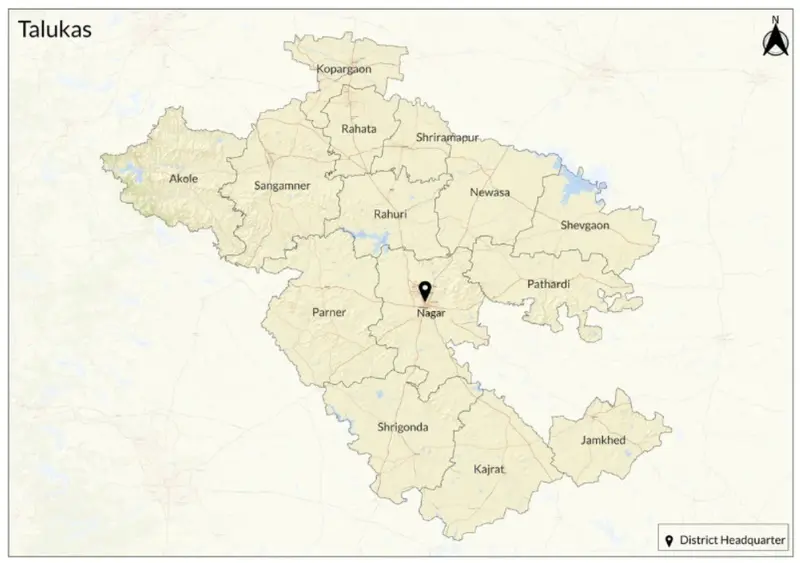Ahilyanagar

17,048 sq. km
~ 48.46 lakh (2019)
939 (2011)
~ ₹65,780 crore (2019)
~ ₹1.35 lakh (2019)
Ahilyanagar (previously known as Ahmednagar) is the largest district in Maharashtra. Its historic headquarters is the city of Ahmednagar, and the largest cities are Ahmednagar and Sangamner. The area was once the seat of the Ahmednagar Sultanate (1496–1636 CE) and is renowned for important towns like Shirdi (linked to Sai Baba), Meherabad (linked to Meher Baba), and Shani Shinganapur. Ahmednagar district belongs to Nashik Division and borders Aurangabad, Nashik, Thane, Pune, Solapur, and Beed districts. Modern Ahmednagar was established in 1818 after the defeat of the Maratha Empire, with its present boundaries formed in 1869. It was part of the Bombay Presidency until 1947, then Bombay State, and has been in Maharashtra since 1960.
During most part of the 15th century, Ahilyanagar was a battlefield controlled by the Bahmani troops. After the sultanate fell apart, the Nizam Shahi Dynasty was established which ruled the region until the 17th century. The district has notable historical and cultural remains, for instance, the fort and caves located in Takli Dhokeshwar, which date back to the mid-7th century. The famous Shirdi is located in Ahilyanagar too.
Ahilyanagar is located on the Deccan Plateau, about 649 meters above sea level, near the Sina River. This river influences its semi-arid climate and farming practices. The landscape consists of rolling plains and hills, which affect how people live and work in the area. Notably, Ralegaon Siddhi is a village in Parner taluka of Ahilyanagar, which became known for brilliant model of environmental conservation.
The economy of Ahilyanagar is diverse, with a mix of industries and agriculture. Farming is a key occupation, supported by sugarcane factories and dairy cooperatives. The district has one of the largest number of sugar mills in the state. Presence of some industrial establishment helps diversify the economy. Additionally, traditional markets like Savedi and Topkhana bazaars are important sites for local residents. Interestingly, the district is one of the most prolific in various sports activities.
